|
Introduction of the artist:
ZHUANG Hui (China)
Born in 1963, Yumen, Gansu Province, China. Lives in Beijing, China.
Selected solo exhibitions: 2009 Yumen 2006-2009: Photography Project Zhuang
Hui and Dan’er, Three Shadows Photography Art Center, Beijing; 2003 Zhuang Hui:
Ten Years, Courtyard Gallery, Beijing;
Selected group exhibitions:
2011 Guan Xi Contemporary Chinese Art, Guangdong Museum of Art, Guangzhou;
2009 Displacemen, Salt Lake Art Center, Salt Lake City; 2008 New
World Order – Contemporary Installation Art Photography From China, The
Groninger Museum, Groninger; 2007 The Real Thing – Contemporary Art From
China, Tate Modern, Liverpool; 2006 Continuous Dialogue, Galleria Continua,
Beijing; Galleria Continua, San Gimignano; 2005 Mahjong, Chinesische
Gegenwartskunst, Kunstmuseum Bern, Bern; 2004 Attack!, Kunst und Krieg in
den Zeiten der Medien, Kunsthalle Wien (Museumsquartier), Vienn; 2004 Between
Past and Future: New Photography and Video From China, ICP (International Center
of Photography), New York; Smart Museum of Art, Chicago; Seattle Art Museum,
Seattle; 2002 Art & Economy, Gemeinschaftsprojekt mit dem Siemens Arts
Program, Deichtorhallen Hamburg, Hamburg; 2001 Abstraction and Decoration
Beyeler Art Museum, Basel; 2001 In Contradiction, Finnish Museum of Photography,
Helsinki; 2000 5th Lyon Biennale, Lyon, France; 1999 The 1st Fukuoka Art
Triennale, Fukuoka Asian Art Triennale, Fukuoka; 1999 the 48th Venice
Biennale, Venice, Italy; 1999 Lost Chain, Ken Site Art Museum, Bern;
1998 International Foto –Triennial Esslingen, Galerie der Stadt Esslingen,
Esslingen; 1996 Visual Art Festival, Kunstverein and Kunsthaus, Hamburg,
Germany.
On December 14th, 1994, the world’s largest hydro-electric megaproject – the
Three Gorges Dam – commenced construction in Sandouping, in the city of Yichang,
Hubei Province. After the dam’s completion, it underwent three more stages of
increased water retention, raising its maximum storage capacity to 175 metres
above sea level.
In April of 1995, Zhuang Hui went to the Three
Gorges to begin a long-term art project. He chose three areas – the initial
construction point of the dam at Sandouping in Xiling Gorge, a point along the
riverbank in Wu Gorge, and Baidi City at the entrance of the Qutang Gorge – and
dug over one hundred holes, each a half metre deep. He photographed the holes on
the earth’s surface, and said little else regarding the project – which, at the
time, baffled passersby. Then, in April of 2007 after the dam was completed,
Zhuang hired a cameraman to return to the Three Gorges and, guided by a map, to
film the locations where the holes were left twelve years before. Just as
expected, everything was already gone, and each hole – marking the original
banks of the Yangtze River as well as huge stretches of the natural beauty it
encompassed – had already been swept under 100 metres of water, never to be seen
again. Wu Hung once remarked, “Zhuang Hui does not view these holes as the
markers of a performance piece; rather, he envisions them as vestiges of the
banks of the Yangtze River itself. Now that there is nothing to see, people will
remember those small holes down there somewhere under one hundred metres of
water. This photo documentary will become a vestige vestiges of the banks of the
Yangtze River itself. Now that there is nothing to
see, people will remember
those small holes down there somewhere under one hundred metres of water. This
photo documentary will become a vestige of a vestige.” In other words, the
‘photographic documentation’ here serves as the ‘original work’ itself,
presenting a fact that cannot be witnessed first-hand.
As the Three Gorges project continued to develop, artists began to engage –
from a variety of differentperspectives – in the growing critical dialogue
surrounding the ecological disruption and human displacement that have followed;
yet it was Zhuang Hui who was first aware of the Three Gorges project as a
significant incident that would affect the lives of millions of Chinese people
and their cultural memories. His work was not a ‘response’ or ‘reaction’ to the
changes brought on by the dam, but rather an ‘involvement’ from the start, all
the way through its development. His artistic process ‘grew’ alongside the
construction process, providing simple evidence for later reflections upon of
the ‘visible’ and the ‘invisible’ therein.
Introduction of works:
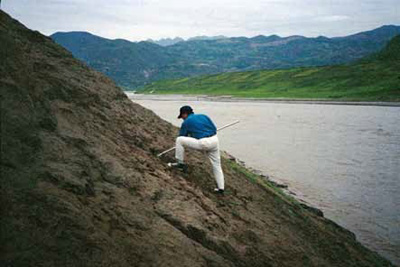
Digging at Wu Gorge
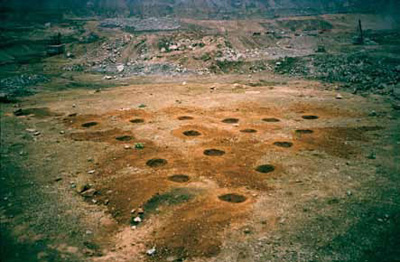
Holes on the earth surface of Three Gorge Dam
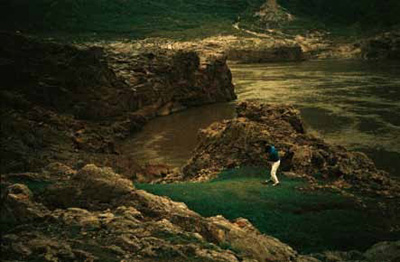
Digging at Baidi City
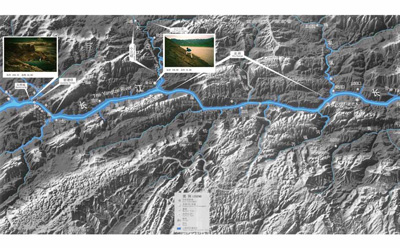
Longitude 109.88, Latitude 31.09, black and white photo, video, paper,
dimensions variable, 1995, 2008
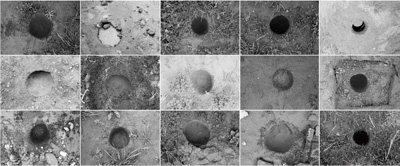
Holes on the earth surface of Three Gorge Dam
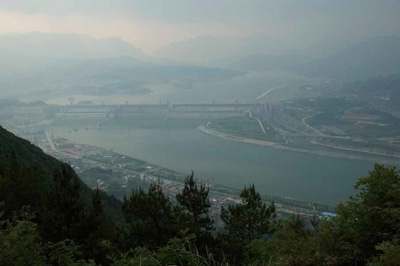
Three Gorges Dam, video, 30'00", 2008
On December 14th, 1994, the world’s largest hydro-electric megaproject – the
Three Gorges Dam – commenced construction in Sandouping, in the city of Yichang,
Hubei Province. After the dam’s completion, it underwent three more stages of
increased water retention, raising its maximum storage capacity to 175 metres
above sea level.
In April of 1995, Zhuang Hui went to the Three Gorges to begin a long-term
art project. He chose three areas – the initial construction point of the dam at
Sandouping in Xiling Gorge, a point along the riverbank in Wu Gorge, and Baidi
City at the entrance of the Qutang Gorge – and dug over one hundred holes, each
a half metre deep. He photographed the holes on the earth’s surface, and said
little else regarding the project – which, at the time, baffled passersby. Then,
in April of 2007 after the dam was completed, Zhuang hired a cameraman to return
to the Three Gorges and, guided by a map, to film the locations where the holes
were left twelve years before. Just as expected, everything was already gone,
and each hole – marking the original banks of the Yangtze River as well as huge
stretches of the natural beauty it encompassed – had already been swept under
100 metres of water, never to be seen again. Wu Hung once remarked, “Zhuang Hui
does not view these holes as the markers of a performance piece; rather, he
envisions them as vestiges of the banks of the Yangtze River itself. Now that
there is nothing to see, people will remember those small holes down there
somewhere under one hundred metres of water. This photo documentary will become
a vestige of a vestige”. In other words, the ‘photographic documentation’ here
serves as the ‘original work’ itself, presenting a fact that cannot be witnessed
first-hand.
As the Three Gorges project continued to develop, artists began to engage –
from a variety of different perspectives – in the growing critical dialogue
surrounding the ecological disruption and human displacement that have followed;
yet it was Zhuang Hui who was first aware of the Three Gorges project as a
significant incident that would affect the lives of millions of Chinese people
and their cultural memories. His work was not a ‘response’ or ‘reaction’ to the
changes brought on by the dam, but rather an ‘involvement’ from the start, all
the way through its development. His artistic process ‘grew’ alongside the
construction process, providing simple evidence for later reflections upon of
the ‘visible’ and the ‘invisible’ therein. |

